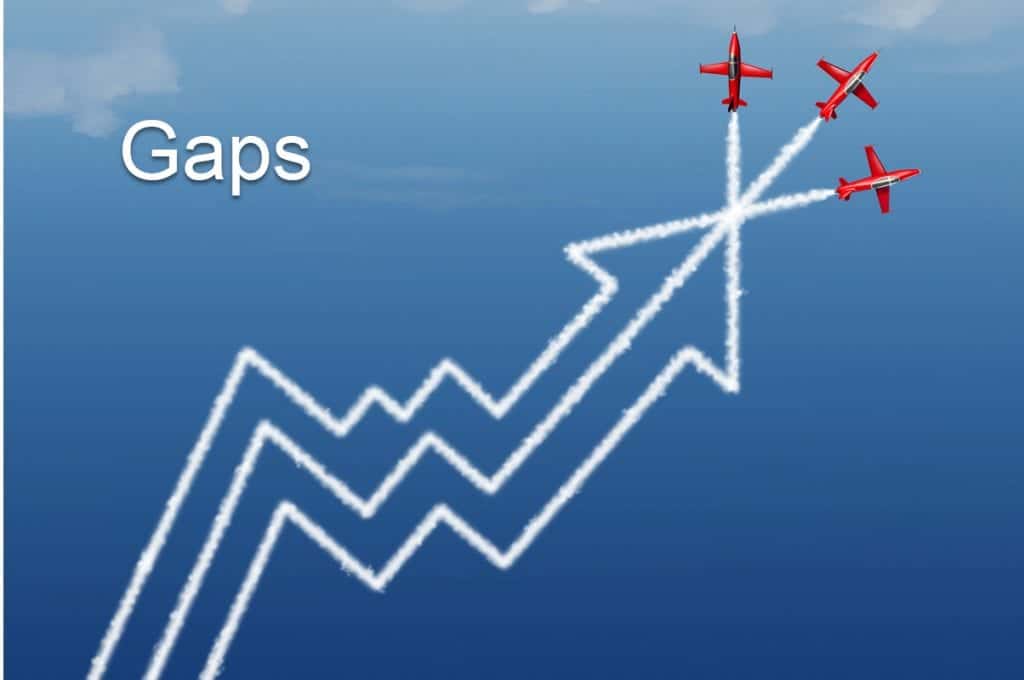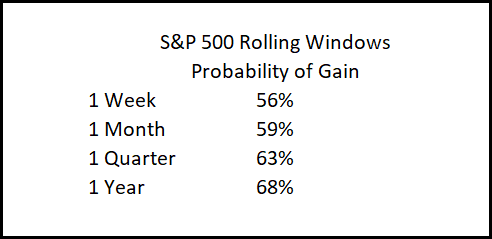
Patterns Recognition: Gaps
Today we look at several Gap patterns. I prefer to use them as a continuation pattern especially during a strongly trending market. The problem with Gaps is they can only be defined several days after they occur. Therefore, we must apply some rules to help define the validity of the gap pattern before or as they occur.
The Runaway or Breakaway Gap
The Runaway or Breakaway Gap is where prices jump without actually trading and the Gap area is never filled. This may occur for various reasons, mainly due to unexpected news or an announcement. This type of pattern can indicate a strong continuation of the trend. There is no way to define this type of move beforehand.
The Exhaustion Gap
The Exhaustion Gap is the hardest to define and is essentially our enemy when trading the Continuation Gap. An Exhaustion Gap is seen at the end of prolonged moves and generally indicates a trend reversal. Again, we cannot define the Gap prior to it occurring although large increases in volume and blow-off characteristics can help. We will however define an Exhaustion Gap as such when the bar preceding the Gap is broken contrary to the actual trend. That is, in an uptrend, the low of the preceding bar is broken. In a downtrend, the high of the preceding bar is broken. When this occurs, we label the gap as an exhaustion pattern and stand aside.
Continuation Gap
Continuation Gap This is the pattern that we look to trade. It differs slightly from the other Gaps above, but can be very profitable during a strong trend. I highly suggest that stock traders only trade this type of pattern when prices are moving quickly, i.e. during a strong trend or thrust.
The Continuation Gap Setup Rules
- The Gap must be in the direction of the current trend. Use a trend filter to define the trend if it’s not already obvious.
- The Gap must be away from the preceding bar, (P), during a sustained trend. It must not be a part of a pullback or retracement of a trend such as in a consolidation area. Gaps out of consolidation areas tend to be either breakaway gaps or exhaustion gaps.
The setup is complete if:
- The Gap is filled within 4 days, and
- in an uptrend, the low of bar P is not breached
The major difference between a Continuation Gap and an Exhaustion Gap is whether or not the preceding bar (P) is broken. If the (P) bar is broken we assume an Exhaustion Gap may occur and we will not take the trade. If the preceding (P) bar is not broken and the Gap has been filled within four days we then, and only then, have a Gap Continuation setup.
More information on Gaps and how to trade them is available in Building a Profitable Trading Plan Using Technical Analysis course provided to members of The Chartist within the Education section.


